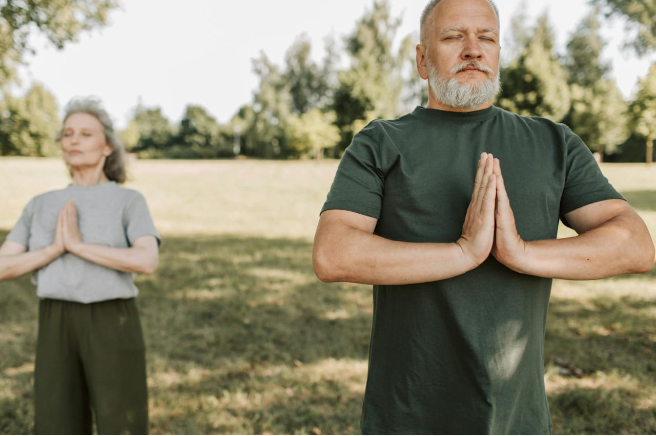Local Solutions, Global Resonance
Global sustainability presents a fascinating disconnect. International agreements plod forward with diplomatic caution, while local communities simply get to work. It’s like comparing a formal orchestra to street musicians—one follows a careful score, the other responds to what’s happening right now.
Look at what’s unfolding in 2025. The gap between UN climate declarations and actual on-the-ground implementation keeps widening. Communities aren’t sitting around waiting for policy frameworks—they’re already crafting fixes for right-now problems.
Indigenous knowledge systems have preserved biodiversity for centuries. Urban community gardens transform food deserts. Regional water conservation partnerships solve problems that cross jurisdictional boundaries. These practical approaches often work brilliantly yet remain invisible in global sustainability conversations. And while international forums parse fancy reports, the real laboratory is happening at neighborhood scales—where every experiment has immediate stakes.
The tension between top-down policy and bottom-up practice isn’t just a problem—it’s an opportunity. Education can connect these worlds, translating community innovations into scalable models while grounding international frameworks in practical reality. This intersection might be exactly where our most effective environmental solutions will emerge.
Communities as Environmental Labs
Local communities aren’t just implementing environmental policies—they’re essentially running research and development labs that generate valuable data often missed by global institutions. These grassroots experiments provide real-world testing grounds for ecological solutions that look promising on paper. One of the oldest—and often most overlooked—of these living labs is found in indigenous land stewardship.
Three approaches stand out: indigenous land management techniques refined over generations, urban greening initiatives transforming concrete jungles, and regional coalitions that transcend political boundaries. Each offers practical demonstrations of what’s possible when environmental stewardship happens at the local level.
The challenge? These community initiatives frequently produce outcomes that don’t fit neatly into the standardized indicators favored by global organizations. When a sacred grove preservation project succeeds by local standards but fails to register on international metrics, we miss important signals about what actually works.
Indigenous Land Management
Indigenous rotational burning practices follow seasonal protocols that boost soil fertility and biodiversity in ways synthetic fertilizers can’t match. These aren’t random fires but carefully timed burns based on generations of ecological knowledge—knowledge that includes understanding subtle environmental cues that signal when conditions are right.
Sacred-grove stewardship represents another vital practice where communities protect areas with both ecological and cultural significance. These spaces serve as biodiversity reservoirs and living libraries of cultural heritage, connecting people to place in profound ways.
Yet these sophisticated practices often get overlooked in frameworks like the United Nations Framework Convention on Climate Change’s (UNFCCC) carbon accounting, which reduces complex ecological relationships to carbon metrics. This disconnect highlights how traditional ecological knowledge frequently collides with the simplistic measures favored by policy frameworks. The tension isn’t just administrative—it represents fundamentally different ways of seeing and valuing the environment. Yet the same practical drive that fuels rotational burns also sparks greenery projects in city streets.
Urban Community Initiatives
In cities, community groups are transforming forgotten vacant lots into connected green corridors that combat urban heat islands. What starts as a few neighbors planting trees sometimes evolves into neighborhood-wide temperature reduction systems—complete with the occasional turf wars over who gets to name the community garden.
Bioswale networks represent another grassroots innovation, capturing stormwater runoff while doubling as community gathering spaces. Who knew that drainage infrastructure could become a point of neighborhood pride? These installations often involve residents in maintenance, creating the unusual scenario where people actually volunteer to clean ditches.
The data shows these projects working—fewer flood incidents and enthusiastic community feedback. But here’s the irony: these undeniable successes often register as statistical footnotes in global indices like the Sustainable Development Goals (SDG) water-quality targets. A neighborhood might transform its relationship with water completely, yet barely move the needle on international metrics. It’s like acing a test that nobody’s grading. And just as cities are reweaving ecosystems into concrete, whole regions are finding common ground across borders.
Regional Conservation Efforts
Moving beyond neighborhood boundaries, cross-border watershed governance shows how environmental cooperation can transcend political lines on maps. These coalitions connect upstream communities with downstream users through shared monitoring stations and joint decision-making councils, both managing resources collectively instead of competitively.
The results speak for themselves—improved fish migration counts and measurable reductions in pollutant loads. What makes these initiatives remarkable isn’t just their ecological impact but how they navigate complex political terrain while focusing on shared environmental goals.
The frustration? These collaborative successes often exist in a policy blind spot, falling outside the rigid boundaries defined by UN convention zones. It’s as if the most innovative cross-boundary work happens in the spaces between our official frameworks rather than within them—pointing to the limitations of our current approach to environmental governance. These success stories underscore a persistent puzzle—why the models that flourish locally stumble under global scorecards.
Policy and Practice Tension
Global frameworks like UNFCCC carbon accounting and SDG indicators offer useful consistency—but they often miss crucial factors that don’t fit neatly into spreadsheets—things like cultural values and soil microbiome health.
Community priorities rarely align with global metrics. International bodies track CO2 levels, but local groups might care more about preserving traditional practices, maintaining soil health, or strengthening community bonds. It’s like judging a cooking competition with just a thermometer. You’ll get data, sure, but you’ll completely miss the flavor.
Why do policymakers insist on uniform metrics? To compare apples to apples. The problem? We’re not dealing with just apples. We’re dealing with complex ecosystems where local knowledge and values matter tremendously. This standardized approach often alienates the very communities whose participation is essential, creating a situation where the push for consistent measurement undermines the local engagement needed to drive real change. That mismatch is exactly what hands-on education programs are built to resolve.
Bridging Scales with Education
The IB Environmental Systems and Societies SL course tackles the disconnect between local realities and global frameworks. It gives students systems-thinking skills to translate community-level data into meaningful policy insights. Instead of treating these as separate domains, the course shows their interconnection through case studies and hands-on field experiences.
Look at the coastal mangrove rehabilitation module. Students actually get muddy measuring salinity, mapping biodiversity patterns, and calculating carbon sequestration rates. This isn’t just theoretical learning—it’s practical understanding that links classroom concepts directly to ecological systems.
Students then take what they’ve learned in the field and critique standardized SDG targets, adapting indicators to better reflect local conditions they’ve observed firsthand. This builds both analytical thinking for policy work and empathy for community engagement. But there’s a limit to classroom learning—real scaling requires direct partnerships with communities where these environmental challenges are lived daily realities. Once you’ve translated local data for policy, the next hurdle is carrying it into new contexts without losing its soul.
Responsible Scaling
Scaling local environmental wisdom requires more than just copy-pasting solutions from one place to another. It demands co-designed pilots where originators and adopters negotiate how practices might need to change in new contexts. Turns out you can’t just transplant a sacred grove preservation system from Guatemala to Indonesia and expect it to flourish without adaptation—who knew?
Success depends on iterative feedback loops—regular data sharing, joint evaluations, and course corrections when things inevitably don’t go as planned. This isn’t the clean, linear scaling process that funders love to see in grant applications. It’s messier, slower, and ultimately more effective.
Incorporating local indicators alongside global metrics means valuing cultural significance and maintenance capacity in addition to carbon sequestration or biodiversity indices. Without this nuanced approach, we risk environmental colonialism dressed up as sustainability—imposing solutions that make sense on paper but fail in practice because they don’t respect local contexts and capabilities. And when co-design works, it sounds less like a marching band and more like musicians riffing off each other.
Toward a Global Symphony
What these indigenous, urban, and regional initiatives reveal is the significant blind spot in our global frameworks. They show us that environmental solutions cannot be imposed from above but must be co-created with the communities most affected. Education and collaborative design offer bridges between scales, helping us avoid the trap of one-size-fits-all approaches.
The path forward requires fewer conductors waving batons and more musicians improvising together. This means recognizing that global sustainability isn’t a symphony with a predetermined score but more like jazz—responsive, adaptive, and built on the contributions of diverse participants.
We might start by asking which community voices inform the policies we support—and which remain unheard. The sooner we tune into those voices, the quicker we’ll move from one-size-fits-none policies to adaptability in action. The most sustainable futures won’t emerge from fixed solutions but from ongoing adaptation. Just as the best jazz comes from musicians who know when to lead and when to follow, environmental progress depends on our ability to both share expertise and listen deeply to different ways of knowing. The rhythm of true sustainability is responsive, not prescribed.





